Flying & fighting in the Eurofighter Typhoon: Interview with Raffael ‘Klax’ Klaschka

Fast, powerful and reliable, the Typhoon is the backbone of Europe’s air power. Outnumbering the US’ F-15C and F-22s combined, it is a large and potent force, set to grow larger with future German orders. We spoke to Raffael ‘Klax’ Klaschka – former German Air Force Phantom and Typhoon pilot – now Marketing Lead at Eurofighter GmbH, to find out more.
Which aircraft have you flown and with which units?
“After flying several training aircraft during my Military Pilot Training I was rated
‘Combat Ready’ on the mighty F-4F Phantom, the F/A-18 Hornet and, of course,
Eurofighter Typhoon. My total of more than 2.500 flying hours were spread
across a range of different units in Germany, in the US and in Spain.”

How do you feel about the aesthetics of the Typhoon?
“If looks could kill! Eurofighter is very easy on the eye. Personally, for visual appeal, I would rate it close to the F-4F. In ‘clean’ configuration Typhoon is a very slick aircraft, even more so when comparing the single-seater to the twin-seater.”
What were your first impressions of the Typhoon?
“I first saw Typhoon in action during an air show in the early 2000s. My first impression was all about the power. I thought, ‘Wow, this thing has some
strong engines!’ Today, it still has the strongest in its class by far.”
Which three words best describe it?
“Effective. Proven. Trusted.”
What is the best thing about it?
No one single attribute stands-out and that’s the remarkable thing about the
aircraft. It strength lies in the sum of its parts. Power, operability, agility, adaptability, availability and reliability are all outstanding features. If pushed to pick one from a flyer’s point of view – then again; it is the energy. It has bags of it in all kinds of situations. The aircraft exudes confidence – and that filters directly through to the person flying it.”
And the worst thing?
“I’ve never met a pilot who wouldn’t change something about his or her aircraft
– regardless of what they’re sitting in. From a fighter perspective Typhoon is very capable and is getting even more so incrementally through its life. The planned depth and breadth of capability is awesome and I’d like to see it implemented more quickly onto the jets across our front-line squadrons. It is happening – but like all fighter pilots, I want Christmas morning, every morning.”
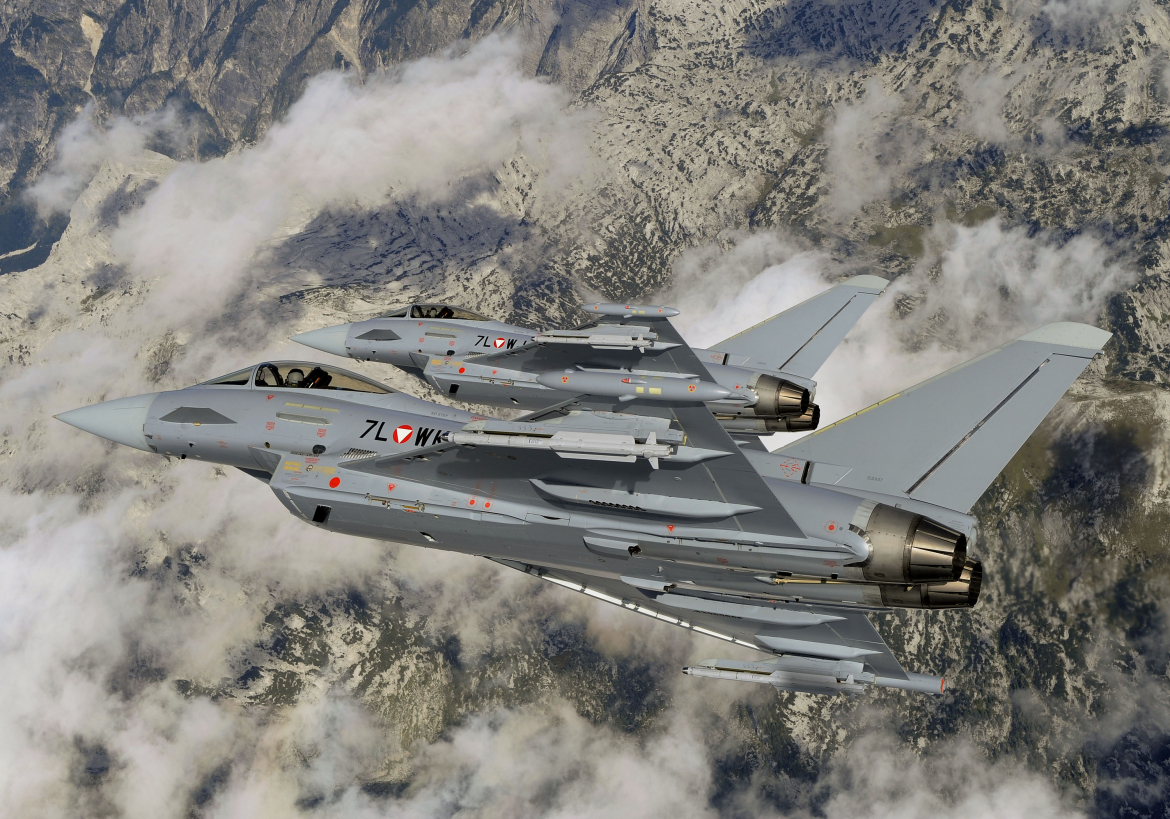
How you rate the Typhoon in the following categories? Inst turn, sust turn etc
“To rate it accurately I would need some validated (rather than PR) comparison figures across the current air fighter domain. But to keep things ‘unclassified’ I can tell you that Typhoon outperforms most of the metal flying around out there in terms of power and acceleration. And with a huge dish (radar) and good power output, the aircraft’s outstanding sensor performance makes it a superior air-to-air fighter. That view is based not only on pure numbers from the flight manual, but also through my experience during exercises and mockup encounters against most of the current western fighters.”
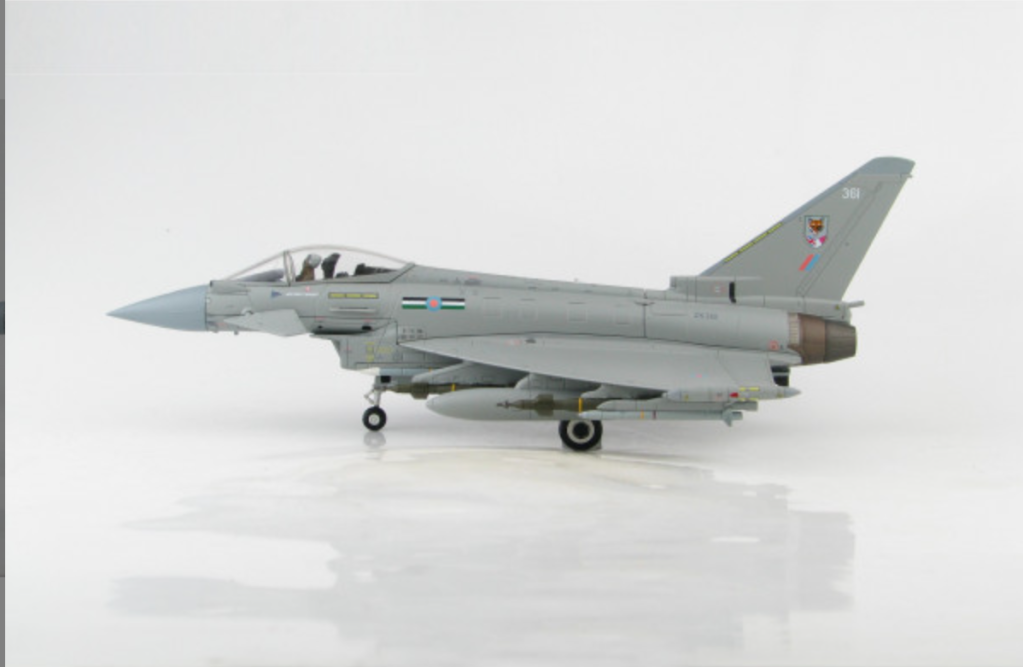
We are behind on our funding efforts. The Hush-Kit blog can only carry with the support of readers like you.
You can donate here.
Which aircraft have you flown DACT against with the Typhoon? Please describe
each and the best way to ‘fight’ each opponent?
“The only way to effectively take on each opponent is to know what level of
capability you’re up against. All the different types of fighter jets flying today has its own unique characteristics. Also key to solving the ‘success in combat’equation is the type of missiles you have on board and the type of cueing system being used. When it comes to a classical “guns only”-fight I would (and did) always trust on Typhoon’s huge excess power to maintain the offensive advantage. If engaged in a 1 or 2-circle fight? I can only offer the standard fighter pilot response: “It depends…’”
Which foreign air force impressed you the most?
“I was quite impressed in the past by the way the air forces of eastern European countries have operated and evolved. One good example is Poland, and there are many others.”
How confident would you feel going against a Su-57 and why?
“With only limited data about the Su-57, I would still say that a Typhoon with
Meteor and E-SCAN will be a lethal opponent against any current asset out there. And we should’t forget the combat mass behind Typhoon. There are almost 500 aircraft alone flying across Europe. I understand that Su-57 was designed with F-22 as its key adversary. Given where we are today – I think Typhoon would perform impressively against either.”
And what about current Typhoon? As I understand E-scan is not operational. Are you counting Su-57 as a ‘current’ threat?
“From what we know about the Su-57, the current Typhoon would be up for the job, specially focussing on BVR capabilities where Typhoon sets the benchmark.”
How do the Hornet and Typhoon compare? According to one pilot, in DACT, the Hornet has the advantage up to 25K and the Typhoon above 25K – is this something you’d agree with?
“The Hornet can achieve very high AOA states. However that comes with tremendous energy bleed. To regain that energy, the Hornet would find itself at an immediate operational disadvantage. I know from experience that would be the case across all altitude bands. To its credit, the ‘nose authority’ during slow speed engagement is quite good on the Hornet. In essence, Hornet would only ever be anything like a challenge for Typhoon during a very slow fight. Typhoon doesn’t do ‘very slow’. So that is not a situation in which any Typhoon pilot I know would purposefully try to place him/herself.”
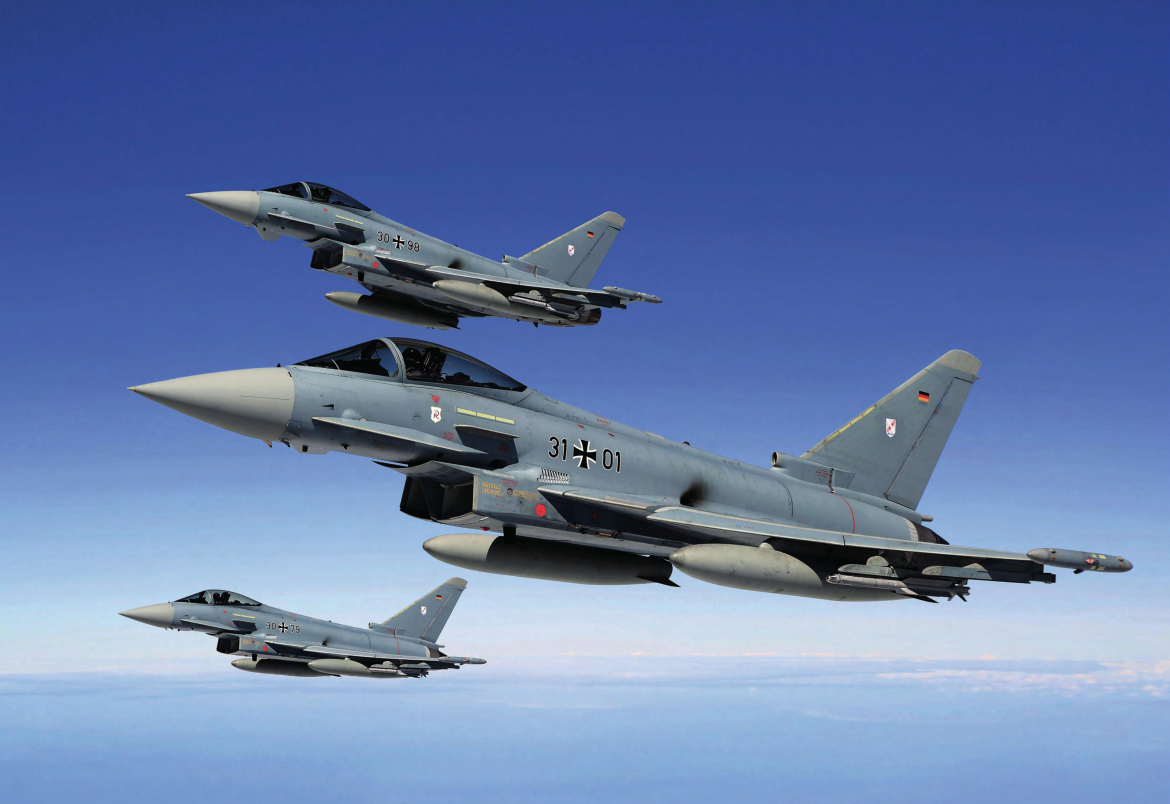
There was a strong response online about the
Rafale pilot’s take on Typhoon from Hushkit.net, it would be great, for the sake
of balance, to get your perspective.
“The ‘Typhoon community’ pretty much covered all the bases in terms of
setting him right on the facts. When everything is considered I think the mix of sensor-fusion, thrust, agility and weapon-load would see Typhoon perform very favourably against all the current players.
Two pilots arguing over the potential outcome of any highly dynamic air combat operation in a “one-G” synthetic environment, is a bit like two bald men fighting over a comb. Air war is complex, a comparison based on a single ‘lucky’ circumstance is not adequate and professional enough and has its place ‘at the bar’ or in forums. Having said that, I do believe Typhoon would be amongst the frontrunners in pretty much any given scenario against any given adversary!”
Weapons
Would a Typhoon with AMRAAM AIM-120D stand a chance against a Typhoon with Meteor, all other parameters being equal? How significant a step forward is Meteor? Is it equal to long range Chinese missiles?
Meteor opens up a new world of BVR fight. I’d wager that Typhoon with Meteor has the combat edge over any potential foe it may come across in today’s skies.
Do you personally prefer IRIS-T or ASRAAM, and what are the reason for your
choice? “I have experience on IRIS-T on the Hornet and on Typhoon. And that was
convincing. My British pilot colleagues are also quite happy with ASRAAM. So
no clear choice or favour; both work great. “
Storm Shadow is a large weapon for an aircraft primarily designed to carry air-to-air missiles, was this a challenging integration? “Most integration programmes present their own unique challenges. What we do know is that Storm Shadow is well-established and operational across a number of air forces.”
Aerodynamic Modification Kit

Before I go back to the interview with Klax I feel I should explain a little background detail about the AMK. Typhoon’s supersonic agility is very impressive, but its current angle-of-attack (AoA) limits at lower speeds are less impressive; a Cassidian (Airbus Defence & Space) led effort demonstrated in 2014 would remedy this. The ‘Aerodynamic Mod Kit’ (AMK) includes re-shaped strakes, leading edge root extensions, and extended trailing edge flaperons. The AMK aims to deliver increases to the maximum wing lift, the AoA limit and the roll rates at High AoA. The strakes will generate vortices that will maintain a controlled airflow over the wing surface even at high angles of attack. When I spoke to EADS test pilot Chris Worning for an article in Aerospace he noted “The first stage was to proof the concept. Do some measurements to see if the strakes did what we thought they would do. And that went very well, the predictions were close. We will fly the Aerodynamic Modification Kit next. We have a mod kit and we’re hopefully going to fly it here this summer (at Manching). This is basically what you could put on a series production aeroplane.”

On the advantages he noted, “First of all they will give us a bit more angle of attack. The maximum angle of attack of the aeroplane increases, which is obviously helpful in close-in combat, if applied intelligently. The second thing they do is increase the manoeuvrability of the aircraft at high angles of attack. So at a given angle of attack, you have for instance, much higher roll rates: so the overall agility of the aircraft increases.”
The Typhoon’s current AoA limit is slightly more than twenty four degrees, approximately the same as an F-16. The new changes are expected to increase the limit to at least 34 degrees which will give pilots in combat a many more possibilities for nose-pointing. Worning was keen to point out that flying at high AoA in combat must be applied intelligently “You have to remember when you have a very AoA there is also a disadvantage: you’re creating an awful lot of drag. But it does give you extra capability if you combine it with wisdom and practice. It’s nice to have the option. The strake is primarily designed for subsonic use and subsonic combat. It will not change the aircraft in the supersonic regime, but there’s not much you can improve there to be honest. It won’t cost us anything. It’s a small aerodynamic surfaces, they weigh a few kilos. There won’t be any disadvantages at all.”

Worning admitted that currently the Rafale has a slightly higher maximum AoA than the Typhoon, but is confident that the new aerodynamic changes will at least equal, and probably surpass the higher figure of the French rival; he also noted that Typhoon will match it while retaining a lot more engine power.
According to Worning the customer interest in AMK, which will probably cost less than one million Euros per aircraft, is increasing: “Looking in to the future and with emerging threats, people are saying we have to optimise what you can do in close-in combat. There’s was a school of thought a few years ago, that everything was going to happen at beyond visual range: nowadays we have new radars and missile for the BVR mission, but you have to look at all parts of the envelope, and this is increasing the manoeuvrability at the lower end. This is something the Luftwaffe and the Royal Air Force are interested in… As I have said, when you enter this go into the very high AoA, you are now entering into an area where the drag really increases, you must apply that capability with brains: you don’t need to be careful- you won’t crash, but you might lose the dogfight, because you reduce your engine. People primarily need the high AoA to ‘point’, but one way you can point a missile with this aircraft is with the helmet (instead of with the whole aircraft). As we have the helmet-mounted sight it’s not that bad, but fighter pilots want everything. Short of those that have TVC and use post-stall manoeuvring we will be able to cope with all of those threat.”

Now back to Klax:
Would AMK help Storm Shadow use, was this a reason for the AMK
development? “The available weapon load on Typhoon allows for a lot of operational flexibility for its air-to-surface configurations, whilst retaining air-to-air capability with special designated stations for those weapons. That’s about all I can say on that matter.”
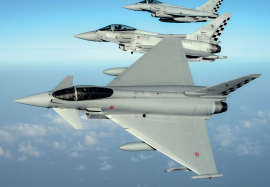
AMK – Huge manoeuvrability increases were described, why has no film been released to demonstrate these abilities? “I think it’s a game-changer as part of Typhoon’s continued capability development.. In my Eurofighter role, I’ll certainly get that message out in the future.”
On the subject of the AMK, why have no operators gone for it?
“AMK expands the flight envelope of Typhoon and allows for more asymmetric configurations with more flexible release sequences. Also it eases the process of integrating new weapons. It is clearly an enabler for more operational flexibility. Operators are looking-on and seeing the benefits already.”
Digital stealth
What is ‘digital stealth’?
“Digital Stealth means using all other means besides the physical shape of the aircraft to deny enemy systems high fidelity of geographic position and signature. Counter-stealth technology is eroding the advantages of low observability. Agile digital stealth capability will ensure survivability in future complex, congested and contested threat environments.”
Can you explain this further? “There are two main elements to being able to act stealthily: being aware of your environment and being hard to observe. The Typhoon’s electronic warfare suite covers both. Firstly, the system provides full awareness of surrounding threats so the pilot knows where they are and what modes they’re using. This picture is enhanced further by pulling in data from other operators in the theatre, networking via the Typhoon’s EW system. With an up-to-the-moment, accurate and comprehensive picture of the environment, a Typhoon pilot can make sure they don’t even come within range of potentially-dangerous radar.
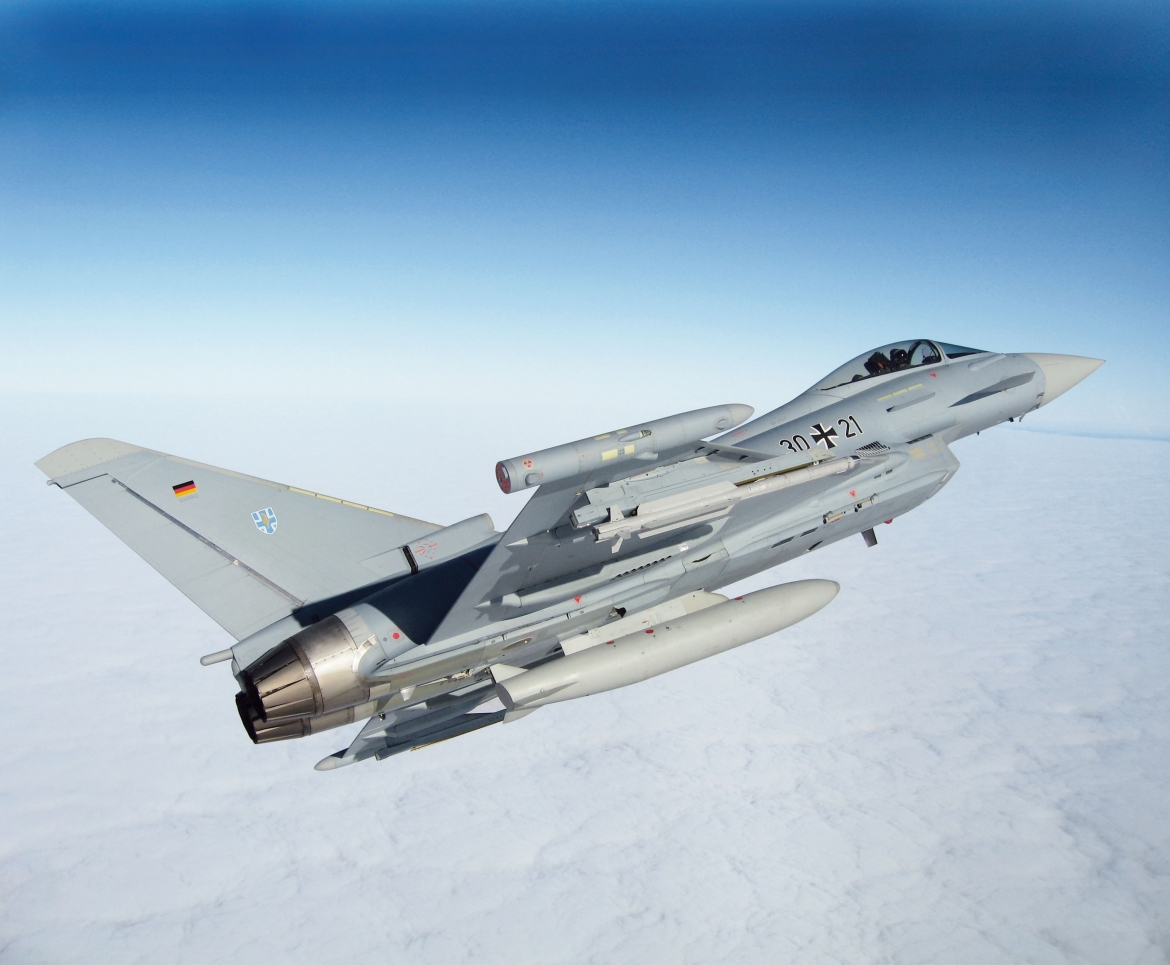
However, staying away from threats isn’t always possible, so the second core element of stealth is to make yourself hard to see. Here, the Typhoon EW suite employs a range of electronic countermeasures that allows the aircraft to digitally hide its signature, becoming invisible to radar, or to digitally create a complex and confusing picture (noise) for a threat operator, denying them a clean targeting opportunity and preventing them from launching a missile in the first place. Digital Means Adaptable
Importantly, the Typhoon’s advanced, reprogrammable EW suite allows the aircraft to react to a constantly-changing threat environment in ways that physical stealth cannot.
Consider today’s threats. The latest surface-to-air missile systems are having their hardware regularly upgraded, are being networked and can change their behaviour almost instantaneously via software-reprogramming. In short, they are constantly evolving, creating a dynamic and challenging threat environment. This means that the advantage of aircraft which use traditional physical stealth technology, which is designed to make the aircraft hard-to-observe by threat radar systems, is eroding. Counter-stealth techniques are on the rise and have been successfully employed as far back as 1993.

This vulnerability against high-end threats with counter-stealth techniques is difficult to address because the basic elements of physical stealth (an aircraft’s skin & surface treatments, internal structure, and configuration) cannot easily be changed. However, in contrast, the Typhoon’s EW systems, which are readily re-programmable, can evolve digitally to maintain the aircraft’s combat advantage even as threats change around it.
The secret to this advantage is ‘mission data’, a term which sounds relatively benign but is critical to an aircraft’s EW performance and often life-saving. Mission data is the threat intelligence that allows the Typhoon’s sensors to recognise a threat and use the appropriate electronic countermeasure or evasion technique to keep the Typhoon safely out of harm’s way. For some aircraft, mission data is controlled by foreign nations or platform manufacturers, meaning that updates can be months, even years apart. With Typhoon, which has an open, reprogrammable system which can be updated by the operator, a new threat which is reported as ‘unknown’ during today’s mission can be programmed into the system in hours, meaning that the threat will be identified and dealt with during the very next mission.”
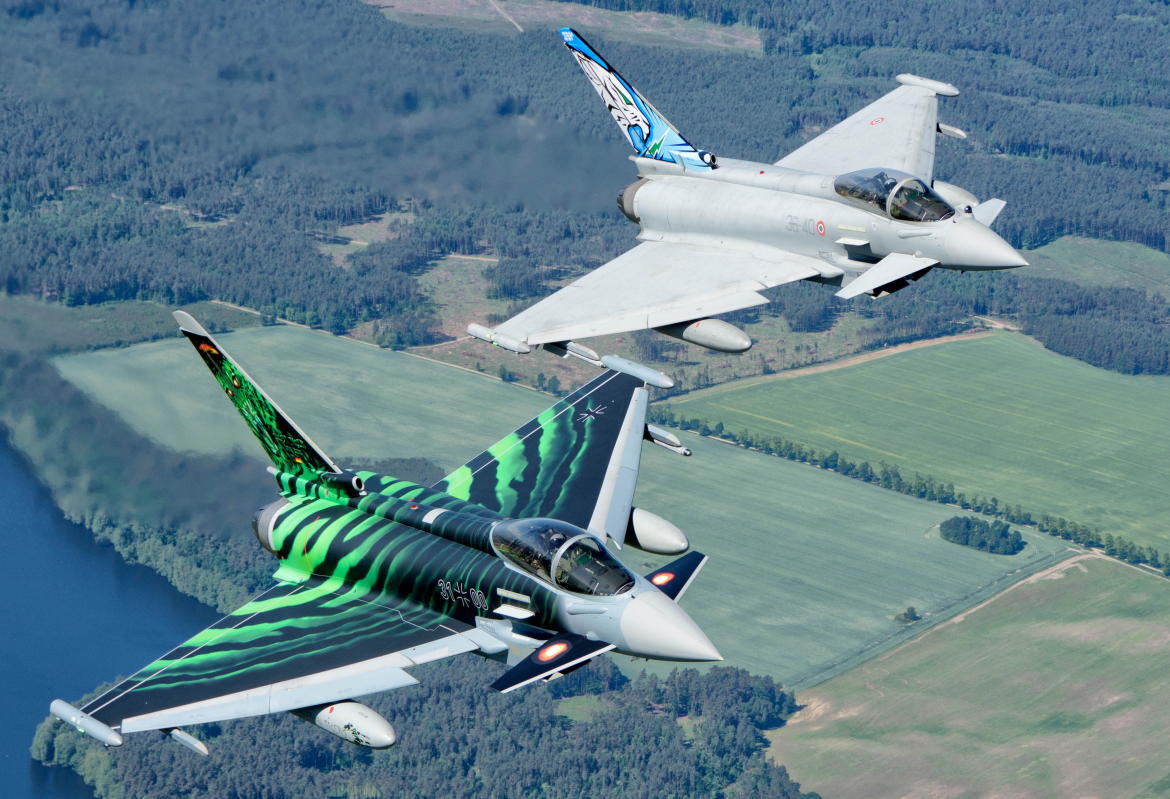
Typhoon has a central column, how does this compare with a sidestick? “My experience with sidestick airplanes is based on several rides in the F-16. I felt it was just a different concept when compared, but in the end both work absolutely fine.”
Does Typhoon have a ‘unique selling point’ not offered by potential rivals? “Two words; ‘Europe’. It has European industrial collaboration in its DNA. Next: ‘Sovereignty’. It gives users total control over MSN Data.”
Typhoon has been described as having an unsurpassed climb rate. Is there any likelihood of an official record attempt?
“We’re too busy protecting air space and borders to chase fast cars and clouds. There’s nothing to prove here. For climb-rate, it’s a world beater in its class.”
Tell me something I don’t know about Typhoon…
“It will likely remain in service with many air forces way beyond 2050. When it eventually leaves service, it will be the best fighter it can ever be and still taking care of business.”
We are behind on our funding efforts. The Hush-Kit blog can only carry with the support of readers like you. You can donate here.
How does the Typhoon community generally feel about the F-35?
“Working alongside the F-35 will be the reality of the next decades to come.
There are some areas where Typhoon is the benchmark. Exploiting those areas
and adding them to the overall capability mix alongside the F-35 will result in
quite a lethal fighting force.”
Support the Hush-Kit Book of Warplanes and pre-order here.
What is the biggest myth about the Typhoon?
“Cost. It can be more cost-effective to own, maintain and operate than pretty
much anything else in its class. The comparison data is in the public domain if
you look in the right places.”
Where? “The data is out there in the public domain. No further comment from Klax here.”
What should I have asked you? “What is like to wear a business suit instead of a flying suit? But that’s a whole new interview.”

“If you have any interest in aviation, you’ll be surprised, entertained and fascinated by Hush-Kit – the world’s best aviation blog”. Rowland White, author of the best-selling ‘Vulcan 607’
I’ve selected the richest juiciest cuts of Hush-Kit, added a huge slab of new unpublished material, and with Unbound, I want to create a beautiful coffee-table book. Pre-order your copy now right here
TO AVOID DISAPPOINTMENT PRE-ORDER YOUR COPY NOW

From the cocaine, blood and flying scarves of World War One dogfighting to the dark arts of modern air combat, here is an enthralling ode to these brutally exciting killing machines.
The Hush-Kit Book of Warplanes is a beautifully designed, highly visual, collection of the best articles from the fascinating world of military aviation –hand-picked from the highly acclaimed Hush-kit online magazine (and mixed with a heavy punch of new exclusive material). It is packed with a feast of material, ranging from interviews with fighter pilots (including the English Electric Lightning, stealthy F-35B and Mach 3 MiG-25 ‘Foxbat’), to wicked satire, expert historical analysis, top 10s and all manner of things aeronautical, from the site described as:
“the thinking-man’s Top Gear… but for planes”.
The solid well-researched information about aeroplanes is brilliantly combined with an irreverent attitude and real insight into the dangerous romantic world of combat aircraft.
FEATURING
- Interviews with pilots of the F-14 Tomcat, Mirage, Typhoon, MiG-25, MiG-27, English Electric Lighting, Harrier, F-15, B-52 and many more.
- Engaging Top (and bottom) 10s including: Greatest fighter aircraft of World War II, Worst British aircraft, Worst Soviet aircraft and many more insanely specific ones.
- Expert analysis of weapons, tactics and technology.
- A look into art and culture’s love affair with the aeroplane.
- Bizarre moments in aviation history.
- Fascinating insights into exceptionally obscure warplanes.

The book will be a stunning object: an essential addition to the library of anyone with even a passing interest in the high-flying world of warplanes, and featuring first-rate photography and a wealth of new world-class illustrations.

Rewards levels include these packs of specially produced trump cards.



Pre-order your copy now right here
I can only do it with your support.
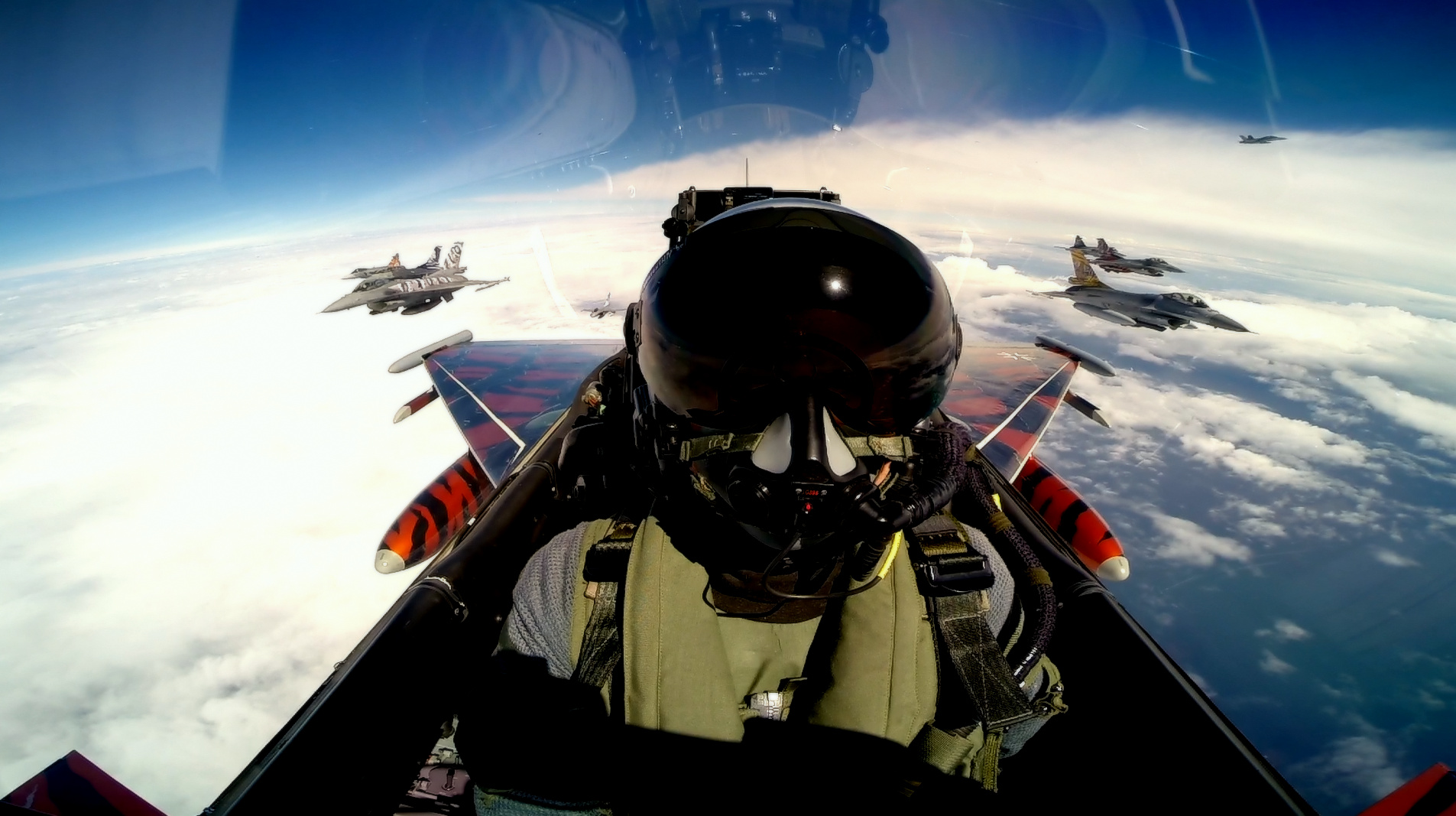

“Storm Shadow is a large weapon for an aircraft primarily designed to carry air-to-air missiles, was this a challenging integration? “
That was a strange question, as the Typhoon was designed to be one step up from a multi role plane and be a swing role in which it can do air to ground and air to air on the same mission at the same time
Great interview with a knowledable partner. I was impressed with the answers. Thank you for asking about the Rafale, and I think he got the message across with respect how to deal with it. I totally agree with him.
I would have loved a bit more detail on the E-Scan and further weapons integration. And obviously some more data on the electronic warfare would have been nice but I am happy with what I got.
Thank you for your blog. I love reading it.
Won’t these “Leading edge root extension” (which are shown in yellow in the photos) cover the gun muzzle? Will Typhoons with AMK basically have no gun?
Very good and informative interview, although there was a definite whiff of the company line.
An interesting, informative interview, although he was clearly wearing his marketing hat rather than his pilots helmet for much of the interview.